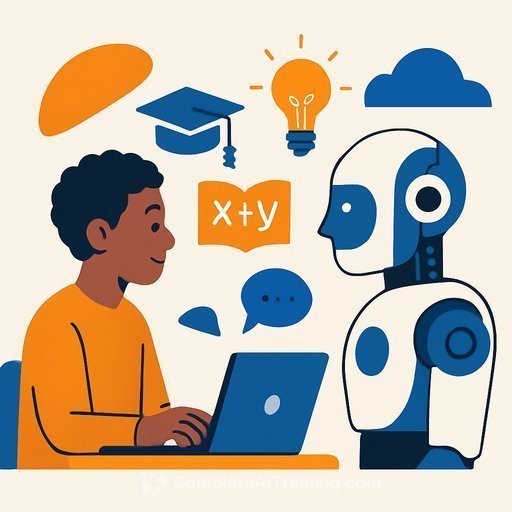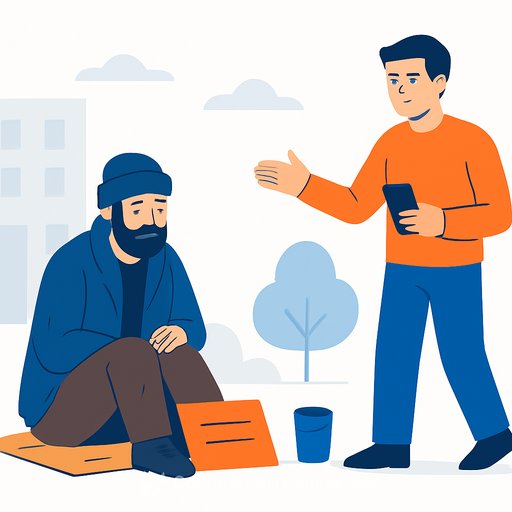AI in Schools: What's at Stake for Students and Schools
Big tech is moving fast to integrate generative AI into K-12 and higher education. The pitch is familiar: better engagement, personalization, and future-ready skills.
But there's a gap between marketing and outcomes. For educators, the question isn't "Can students use AI?" It's "What happens to student thinking, equity, and trust when they do?"
How AI Is Entering Classrooms
Major players are funding programs, pledges, and partnerships to normalize AI in public education.
- TeachAI launched with support from OpenAI, Google, and Microsoft to promote AI in primary and secondary curricula.
- Google funded AI instruction for public school teachers and students; dozens of organizations signed a White House pledge to expand K-12 AI education.
- Big districts now allow or encourage AI use, with large-scale training efforts tied to AFT and NEA.
- States have signed MOUs with Nvidia to expand AI education, including programs that introduce "foundational AI concepts" in K-12.
- District pilots, like Portland's use of Lumi Story AI for student storytelling and merch creation, are rolling out.
Context matters: schools are underfunded, teachers are stretched, and scores are sliding. AI is being positioned as a fix. That makes due diligence even more critical.
The Risks Educators Can't Ignore
Erosion of Critical Thinking
AI reduces friction. That's also the problem. Offloading core cognitive work to a system breaks the practice loop students need to build judgment.
- Studies link frequent AI use to lower critical thinking scores, especially among younger users, due to cognitive offloading.
- Research with knowledge workers shows higher confidence in AI leads to less critical effort and a shift from problem-solving to "AI response integration."
- Skill atrophy is real: after using assistive AI for three months, doctors became worse at spotting precancerous growths without it (Lancet Gastroenterology & Hepatology).
If we normalize AI-first workflows, we risk training students to assemble, not to think.
Reinforcement of Racial and Gender Bias
Generative models learn from massive datasets that include biased content. That bias shows up in outputs.
- In resume-screening tests, leading LLMs showed significant racial and gender bias, favoring white-associated names most often and never favoring Black male-associated names over white male-associated names.
- Image generators often default to stereotypes, linking "Africa" to poverty or associating "poor" with darker skin tones; occupational images skew by race and gender.
Assigning AI-driven research or image work without safeguards risks embedding bias into student learning and classroom materials.
Hallucinations and Manipulation
Generative AI generates plausible text, not verified truth. Hallucinations aren't an edge case; they're inherent to how the systems work.
- Models confidently invent sources, events, and citations. This has shown up in legal filings, government reports, and published media supplements.
- Even advanced models produce inconsistent or false outputs across identical prompts.
- There is also a governance risk: systems can be tuned to reflect political preferences. One high-profile model briefly presented politically charged false claims as instructed by its creators before being adjusted.
In a classroom, false certainty erodes trust, confuses research, and distorts discourse.
Practical Guardrails for Teachers
- Human-first assignments. For core skills (reading, writing, problem-solving), default to "AI optional" or "AI off." Require process evidence: notes, drafts, annotations, and oral defenses.
- No AI-generated citations. Ban AI-made references. Use source checks, retrieval evidence, and annotation rubrics.
- Verification by default. If AI is used, require students to fact-check three claims with primary or reputable secondary sources and briefly justify reliability.
- Bias checks. Add a short "bias reflection" when AI assists with research or images: What assumptions appeared? What changed after review?
- Assessment that resists outsourcing. More in-class writing, whiteboard problem-solving, oral quizzes, and portfolio defenses.
- Skill protection windows. Early units focus on manual methods; optional AI assistance can enter once fundamentals are secure.
- Tool audits. If your district adopts AI, request documentation: data sources, safety evaluations, opt-out paths, and logging controls.
- Privacy first. Prohibit student PII in prompts. Use local or district-approved tools only. Get written consent for any opt-in pilot.
District and Policy Checklist
- Procurement standards. No black boxes. Require bias, hallucination, and safety reporting; data retention limits; educator override; and the ability to disable generative features.
- Curriculum updates. Integrate media literacy, algorithmic bias, and verification skills. Teach students how these systems generate outputs-and their limits.
- Assessment redesign. Use authentic tasks with process evidence. Build in oral explanations and iterative checks that reveal thinking.
- Professional learning. Focus PD on pedagogy and risk management, not just tool tutorials. Train teachers to detect AI dependence and skill slippage.
- Equity impact reviews. Test AI tools across student groups and content areas before scaling. Monitor disparities in output and access.
- Clear classroom policies. Publish what's allowed, what isn't, and how students must document any AI assistance.
Working With Families and the Community
- Explain how AI can short-circuit practice and why that matters for long-term learning.
- Share verification routines families can use at home: source checks, cross-referencing, and skepticism toward generated images.
- Engage the community before entering vendor agreements-cover data privacy, cost, infrastructure, and opportunity trade-offs.
What to Pilot (If You Must)
- AI verification labs. Students test model claims against primary sources and publish error/bias reports.
- Teacher-facing only. Use AI privately to draft rubrics or templates, then human-edit; keep student work streams separate.
- Offline or constrained tools. Favor local, narrow tools with clear data boundaries over general-purpose chatbots.
Bottom Line
AI can speed outputs. Education builds minds. If we prioritize convenience over cognition, we'll pay with weaker critical thinking, amplified bias, and confused truth standards.
Adopt human-first pedagogy, transparent policies, and strict verification. If AI enters your classroom, it should earn its place-under your terms, with student thinking protected.
Your membership also unlocks:






